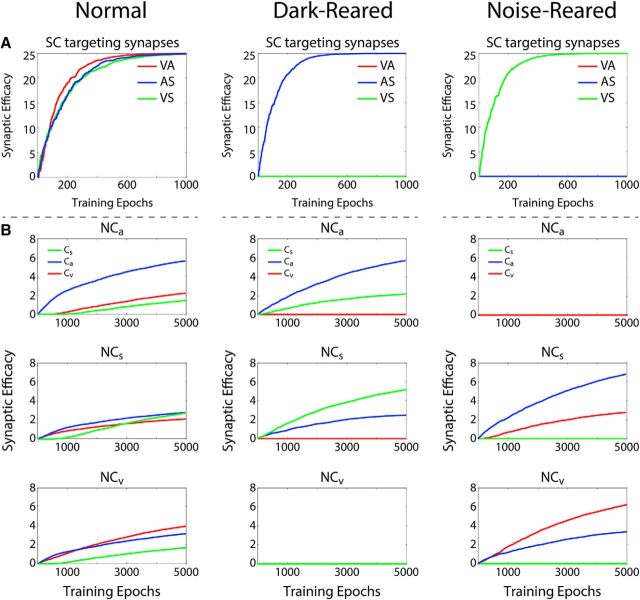Figure 3.
Training changes connection strength (“weights”) during development. A, Plotted for the three different training paradigms/simulated rearing conditions (normal, dark-rearing, and noise-rearing) is the strength of the projection from each noncompetitive compartment (y-axis) as a function of training epoch (x-axis). Noncompetitive channels are identified by the modalities they pool (VA, AS, etc.). The normal training paradigm leads to a strengthening of all channels because all modality pairings are presented, whereas the dark-reared and noise-reared paradigms produce strengthening only in the crossmodal pair represented in the training set. B, Similar experience-specific effects are seen for the inhibitory projections from the noncompetitive subregions to the competitive subregions in each of the training paradigms (larger value = more inhibition). Reverse inhibitory projections from competitive subregions to noncompetitive subregions are symmetric and show equivalent development. Robust inhibition develops for each modality present in the training set and in proportion to its amount of representation. The consequence of this result is that inhibitory interactions are only formed between inputs that were coactivated during training, not all input subregions.

